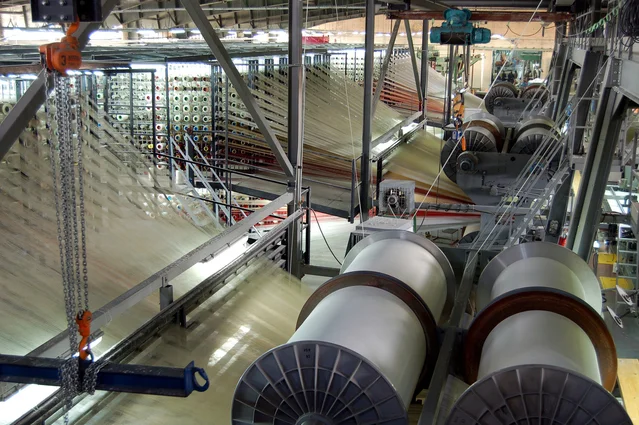IN manufacturing, safety has long been a top priority. More recently, modern workplace safety has undergone a tectonic shift to accommodate the exceptional challenges brought on by the COVID-19 pandemic. While many of us hoped to be out of the woods by now, the pandemic is once again surging, driven by the highly contagious Delta variant, along with others.
Enter artificial intelligence. Many manufacturers already leverage AI technology to anticipate and problem solve for unexpected obstacles such as machinery failure, defective product delivery, and more. According to a recent MIT survey, the top three use cases for AI in factories are improving product quality, achieving greater speed and visibility across supply chains, and optimizing inventory management. Beyond these core use cases, AI can and should be deployed to advance worker safety, especially in a pandemic. AI can help leaders improve factory security, accurate health checks, and build confidence among workers to ensure operational efficiency is never compromised.
Advanced AI facial recognition systems can recognize faces at high accuracy even when they are partially obscured by a face mask.
Factory Security
By certifying the only people to enter a space are in fact those with approved access, factories can limit the risk of exposure to the virus while also reducing accidents and intellectual property breaches. In the past, factories have used fingerprint recognition to approve employee access to the floor. However, in today’s workplace, workers are often required to wear gloves to limit bacterial exposure. AI, combined with facial recognition technology, can be deployed as a contactless solution for identity verification during COVID-19 to control employee access while allowing workers to maintain use of personal protective equipment, including mask wearing. 3D and 2D cameras with anti-spoofing technology offer an added level of protection against potential threats. Many factories employ several thousand people, with hundreds of them working in the same facility at the same time. Facial recognition technology performs factory security checks quickly and at scale, allowing workers to get to work faster, in a certified safe environment.
Accurate Health Checks
Beyond guaranteeing only authorized personnel are entering the factory floor, manufacturers must be assured those employees are truly healthy. Here too, AI can support the mission through thermal cameras and accurate mask detection. The technology reads an employee’s temperature while verifying their identity to determine whether they are displaying symptoms of illness and deny access if a worker appears to be running a fever. The same technology also determines if an employee is wearing a mask and wearing it properly. In some cases, especially in manufacturing, protective gear can interfere this capability. Limiting person-to-person contact during the pandemic continues to be a key practice in limiting the spread of the virus, making this contactless solution preferable to human monitors. It also limits the need to hire additional people to monitor employee health, cutting down on costs.
Worker Confidence
Enlisting technology to determine employee access and health builds confidence amongst employees and alleviates undue pressure. Many factory employees feel burdened to come to work even if they don’t feel well. In using AI to determine health status, and deny access if standards are not met, workers have no choice but to stay home when their temperature is high. In assigning the final decision to a neutral third-party, in this case technology manufacturers remove that pressure from their employees.
Additionally, everyone working on the floor can perform their work with the confidence that all their colleagues have also passed the initial safety check. This removes doubt and lessens fears, allowing workers to focus on the job at hand.
Manufacturing safety will continue to evolve, as it has for the past 100 years or so. The introduction of new technology, such as artificial intelligence and facial recognition, opens the door for additional safety improvements while keeping costs low and ensuring workers and manufacturing leaders have the necessary tools for seamless operations.
- Reprinted from: https://industrytoday.com/
